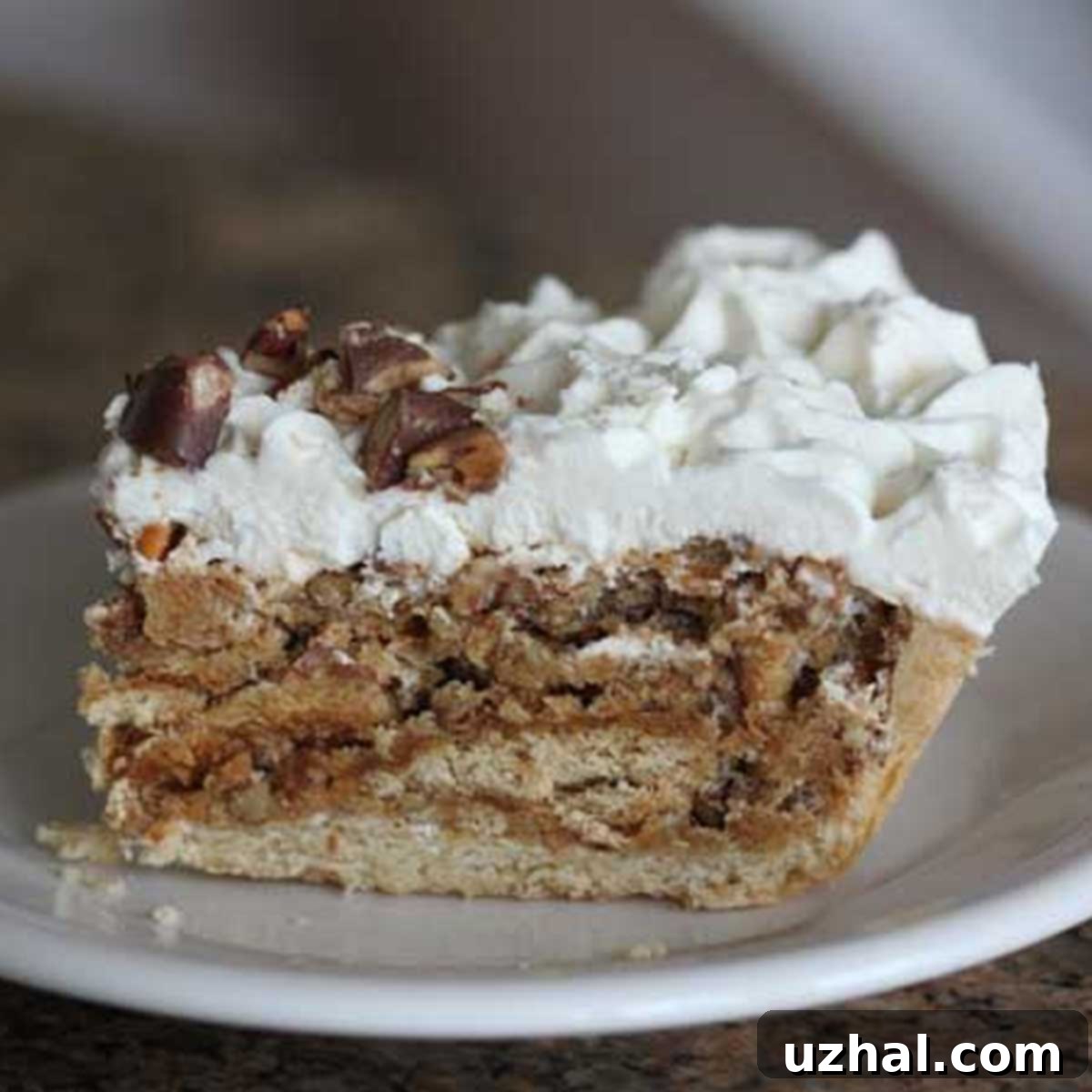Classic Luby’s Butternut Brownie Pie Recipe: A Beloved Taste of Texas Nostalgia
For many who grew up in Texas, the name Luby’s Cafeteria conjures a flood of nostalgic memories. My own childhood recollections are often set against the backdrop of those familiar lines, perhaps even from the vantage point of a high chair rolling along. Luby’s was more than just a restaurant; it was a cornerstone of community, a place where families gathered for comforting, homestyle meals. While I vividly remember many dishes, one particular dessert, the Butternut Brownie Pie, had slipped from my memory until I discovered its recipe in a Luby’s cookbook. The moment I baked it for my mother, her eyes lit up with recognition, and she declared it “just like she remembered.” That immediate, joyful connection solidified this pie’s place in our family’s culinary traditions, and I’ve been making it ever since.
This unique pie, a true Texas classic, has become a staple in my kitchen. Over the years, I’ve experimented with it, refining the process to capture that authentic Luby’s flavor and texture. The journey has been documented through many photos, each representing a step in perfecting this beloved dessert. The first image below is a great starting point, though every batch brings new insights and a renewed appreciation for this simple yet extraordinary pie.
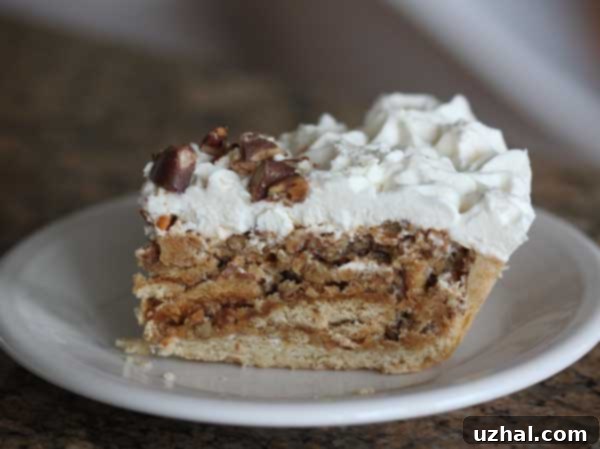
Here’s a closer look at a slice, showcasing the rich, dense texture and the delightful pecan meringue-like filling. It’s often best enjoyed after it has fully cooled, allowing the flavors to meld and the structure to set.
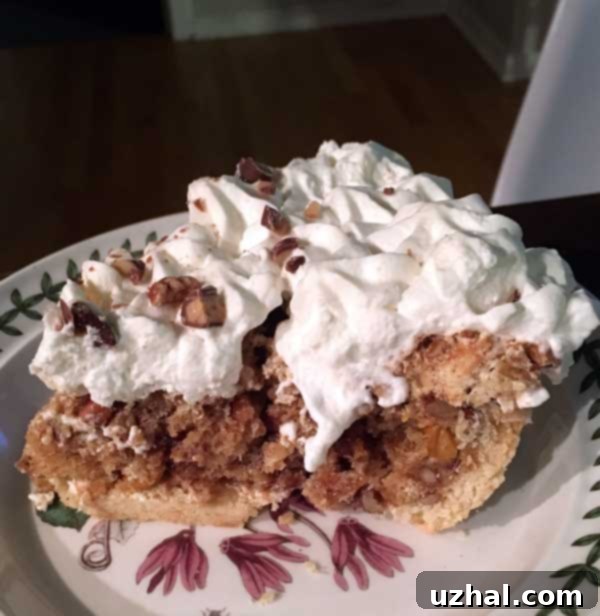
The Curious Case of the “Brownie” in Butternut Brownie Pie (No Chocolate Here!)
One of the most intriguing aspects of the Butternut Brownie Pie is its name. Despite “brownie” being in the title, there is absolutely no chocolate in this recipe! This often leads to confusion for first-timers, who might expect a rich, cocoa-laden dessert. The pie does, however, boast a beautiful brownish hue, which perhaps contributed to its moniker. Upon delving into a bit of culinary history, I discovered that before the widespread popularity of chocolate brownies, there existed “brown sugar brownies.” These older versions relied on the deep, caramelized notes of brown sugar for their color and rich flavor, rather than cocoa. This historical tidbit offers a plausible explanation for the name, connecting this classic Luby’s pie to a much older, less chocolate-centric tradition of baking. The “butternut” likely refers to the rich, buttery flavor profile and perhaps a subtle nuttiness that defines its character.
This pie’s identity is truly unique: it’s a delightful concoction of whipped egg whites, sugar, crunchy pecans, and graham crackers, baked to a firm yet tender consistency. It truly is a testament to how simple ingredients can create extraordinary flavor and texture. The following picture shows the pie topped with a generous dollop of sweetened whipped cream, a classic accompaniment that perfectly balances the pie’s richness.
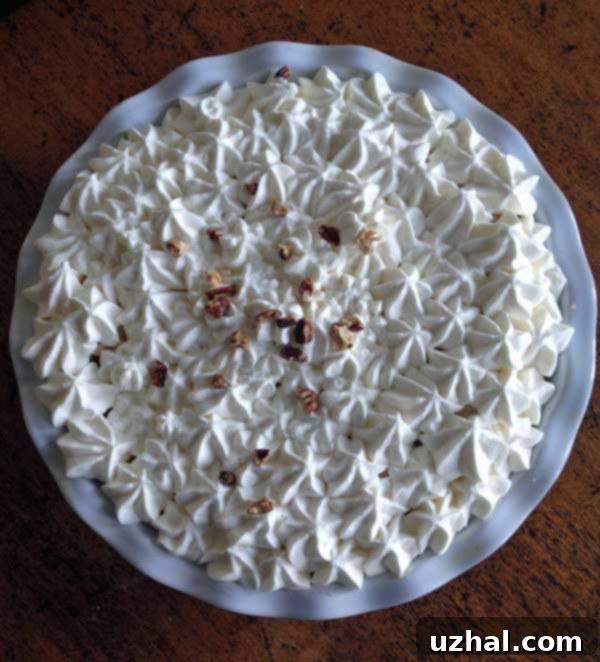
As I mentioned, my journey with this recipe has been one of continuous refinement. Early attempts sometimes involved baking it without a crust, as shown in this older photo of an unbaked pie. While delicious, the presentation and ease of serving have definitely improved with the addition of a crust.
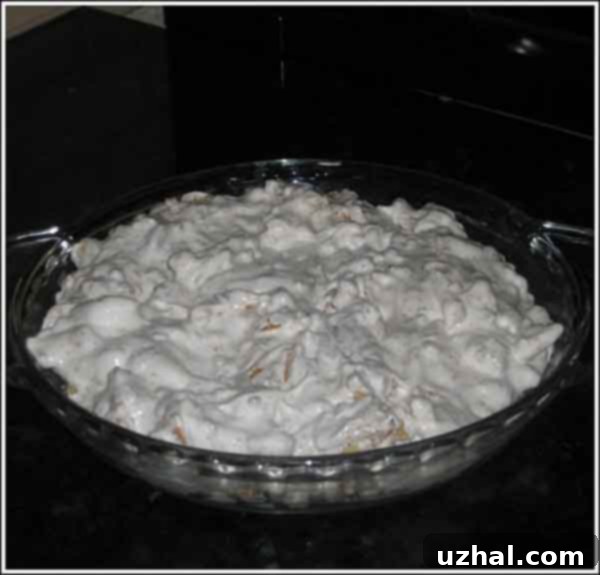
Through these experiments, I’ve learned what works and what doesn’t. For instance, a notable (and not recommended!) variation was an attempt to incorporate Butterfinger candy. While I’m all for creative twists, some classics are best left untouched. The distinct flavors of Butterfinger simply did not harmonize with the delicate balance of the Butternut Brownie Pie, resulting in an overwhelming and rather disjointed dessert experience. This taught me a valuable lesson: respect the original composition when it’s already a masterpiece.
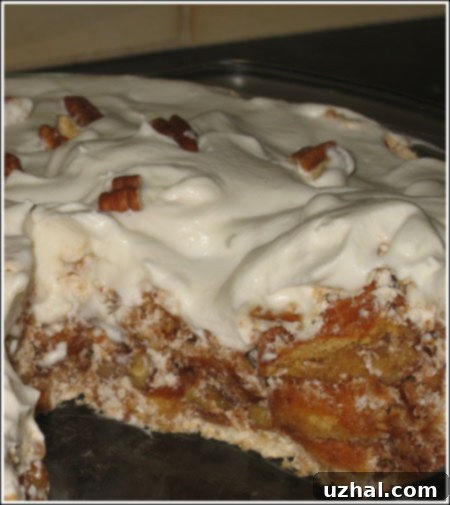
Crust or No Crust: Enhancing the Luby’s Butternut Brownie Pie Experience
The question of whether to include a crust is a common one for this recipe. The original Luby’s cookbook calls for baking the pie in a greased pie dish without a crust, allowing the filling to stand on its own. While this method still yields a delicious pie, my experience over many batches has led me to a strong preference for using a fully baked pie crust. The addition of a crust not only provides a more defined and aesthetically pleasing presentation but also significantly improves the ease of slicing and serving. The crust acts as a sturdy base, preventing the somewhat delicate filling from crumbling as readily, ensuring each slice holds its shape beautifully.
For those opting for a crust, I highly recommend pre-baking it. This ensures a crisp, flaky bottom that won’t become soggy from the pie’s filling. My preferred method involves using a quick Crisco recipe for the crust, baking it covered with foil and weighed down with pie weights at 425°F for about 20 minutes. After removing the foil and weights, I continue baking at 375°F for another 8 minutes until it’s golden brown. It’s crucial to let the crust cool completely before adding the filling and proceeding with the main bake. This extra step is well worth the effort for a superior texture.
Another modification I’ve adopted over time is the baking temperature. While the original Luby’s recipe specifies 300°F, I consistently bake it at 350°F. This slightly higher temperature helps achieve a better rise and a more evenly set filling without over-browning. The pie puffs up quite a bit in the oven, creating a beautiful dome, but will gently settle as it cools, developing that signature dense texture.
A Visual Journey: Crafting the Perfect Butternut Brownie Pie
Let’s walk through some of the more recent creations, illustrating the process and the final delicious result. These images highlight the beauty of this simple yet elegant dessert.
Here, the rich, flavorful filling is carefully poured into a pre-baked pie crust, poised for its transformation in the oven. The contrast between the light, fluffy filling and the golden crust promises a delightful experience.
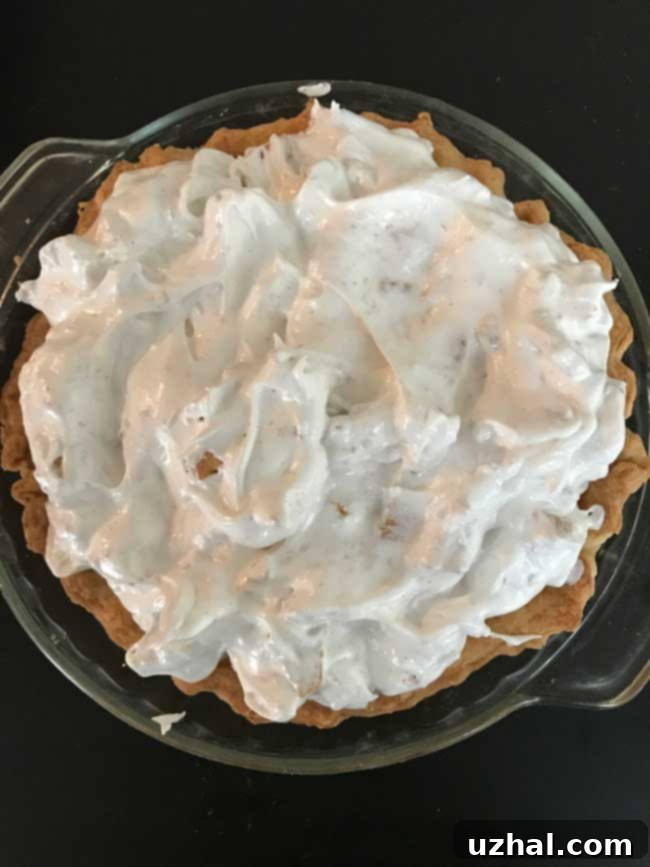
Fresh out of the oven, the pie displays a magnificent puff, a testament to the whipped egg whites. This impressive volume will gradually recede as the pie cools, leaving a firm and wonderfully textured interior. The golden-brown surface hints at the caramelized flavors within.
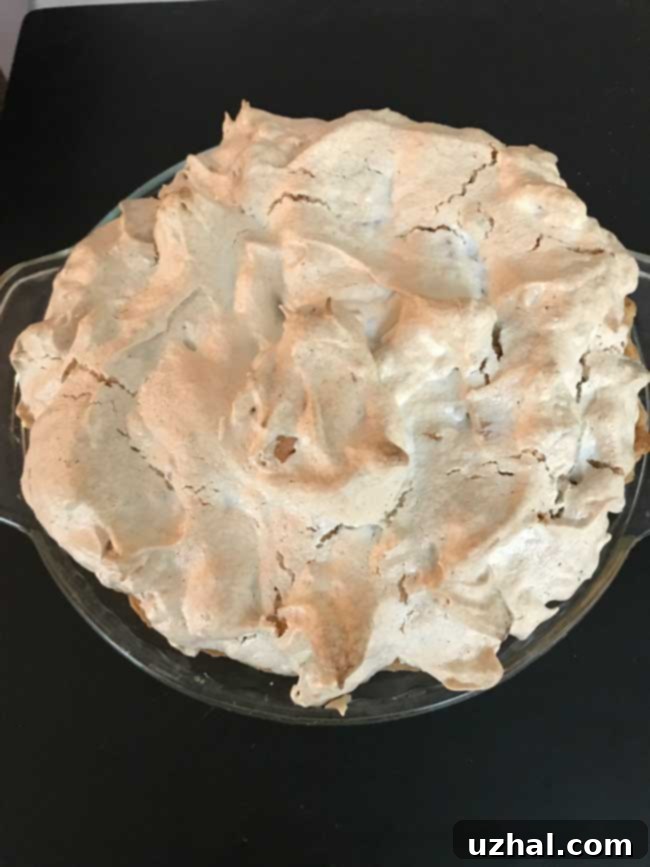
The final touch: a generous swirling of freshly whipped cream. This classic topping adds a layer of creamy indulgence that complements the pie’s nutty sweetness perfectly. It’s truly the crowning glory of this magnificent dessert!
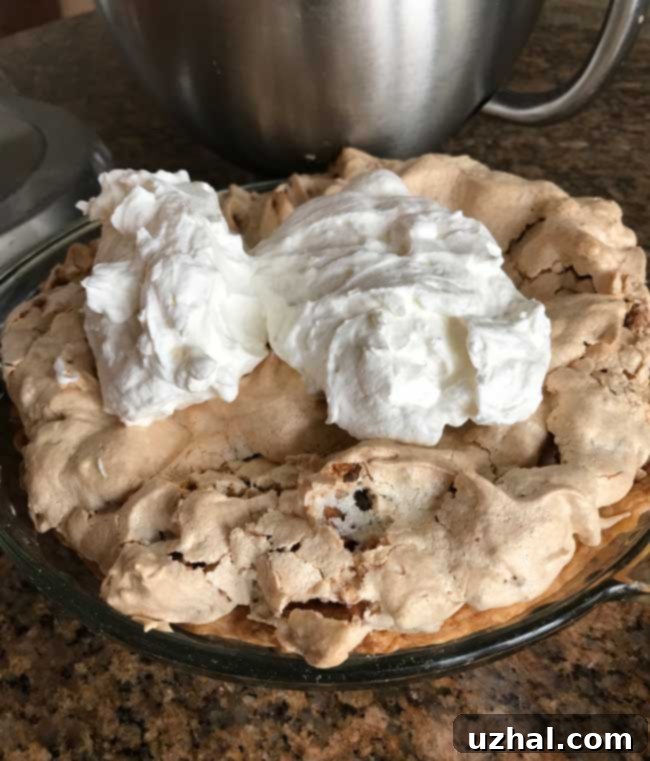
And there it is, ready to be devoured! For a little extra texture and visual appeal, I sometimes sprinkle a few crushed graham crackers on top, adding another dimension to this already delightful treat. Whether served simply or with a flourish, this pie is always a hit.
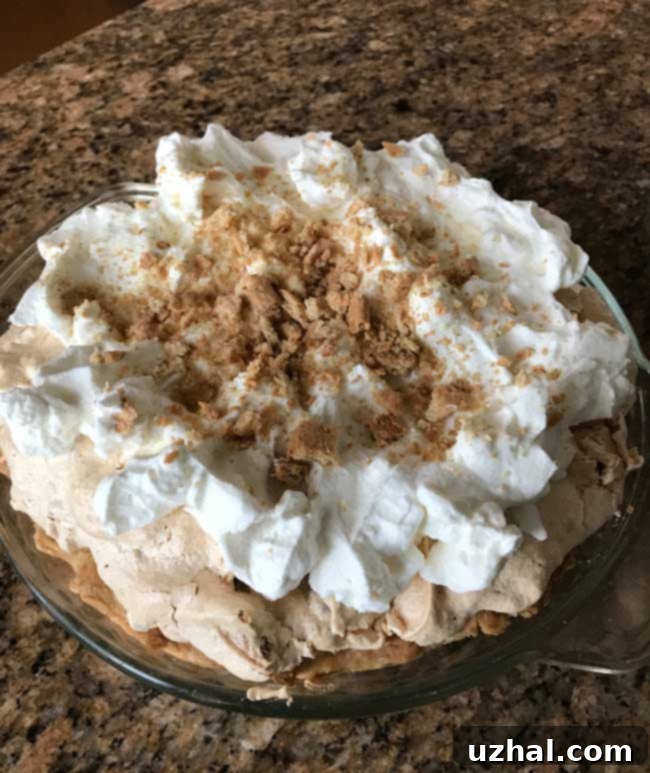
Now, let’s get to the heart of it all – the recipe itself. With these tips and the detailed instructions, you can recreate this iconic taste of Texas right in your own kitchen.
- Luby’s Chocolate Cream Pie
- Giada’s Butternut Squash Lasagna
- Cloverleaf Rolls
- School Lunch Peanut Butter Cookies
- Vegan Graham Crackers
Recipe

Luby’s Butternut Brownie Pie
Anna
Pin Recipe
Ingredients
- Butter or shortening for rubbing pie plate about 1 tablespoon OR 1 fully baked pie crust (see notes for crust details)
- 5 large large or 4 “extra large” egg whites
- ⅛ teaspoon baking powder
- ⅛ teaspoon cream of tartar or just leave it out, but it helps stabilize egg whites
- 1 cup granulated sugar (200 grams)
- 1 teaspoon vanilla extract
- 14 squares graham cracker broken into half inch pieces or coarsely crushed (see notes)
- 1 cup chopped toasted pecans (90 to 100 grams – toasting is key for flavor)
- Optional: ¼ cup of butterscotch chips adds an extra layer of sweetness and flavor if desired
Topping:
- 1 cup cold whipping cream
- 3-4 tablespoons granulated sugar or ¼ cup powdered sugar
- ½ teaspoon vanilla extract
Instructions
-
Preheat your oven to 350 degrees F (175°C). While some older recipes suggest 300°F, 350°F yields a beautifully set pie in my experience.
-
Prepare your pie dish: Rub a 9-inch glass pie plate generously with about 1 tablespoon of butter or shortening if you’re going crustless. If using a crust, ensure you have a fully pre-baked pie crust ready and cooled.
-
In a clean, dry mixing bowl (ensure no grease!), beat the egg whites and baking powder on medium speed until soft peaks begin to form. Add the cream of tartar (if using); it helps stabilize the egg whites. Continue beating, gradually adding the 1 cup of granulated sugar, one tablespoon at a time, until stiff, glossy peaks form. Beat in the vanilla extract until just combined. Gently fold in the graham cracker pieces and chopped, toasted pecans using a rubber scraper. If adding butterscotch chips, fold them in now. Pour this mixture into your prepared pie plate (or baked pie shell) and spread evenly. Bake for 30 minutes.
-
Once baked, remove the pie from the oven and let it cool completely on a wire rack. Don’t be alarmed if the pie sinks a bit as it cools; this is normal and contributes to its characteristic dense texture. Allow at least 2-3 hours for complete cooling before topping.
-
While the pie cools, prepare the topping. In a chilled bowl with chilled beaters, beat the cold whipping cream until it begins to thicken. Gradually add the sugar (granulated or powdered) and vanilla extract. Continue beating until stiff peaks form. Be careful not to overbeat, or it might turn grainy. Once the pie is completely cool, generously top it with the freshly whipped cream. Garnish with extra toasted pecans or crushed graham crackers if desired, then slice and serve!
Notes
The texture of the graham crackers is crucial for this pie. They should be coarsely broken or crushed, ideally with a rolling pin. Avoid crushing them into a fine powder, as this can lead to a dense or “mealy” texture that detracts from the pie’s unique mouthfeel. You want discernible pieces that add delightful crunch and character. Feel free to adjust the amount of graham crackers to your preference; some enjoy a slightly more textured pie.
For the pecans, ensure they are toasted. Toasting brings out their natural oils and deepens their nutty flavor, which is a key component of this pie. I’m a big fan of the convenience of pre-roasted, pre-chopped pecans from specialty stores like Trader Joe’s, but you can easily toast your own in a dry pan over medium heat for a few minutes until fragrant.
The optional addition of about ¼ cup to ⅓ cup of butterscotch chips can be a nice touch if you enjoy an extra layer of caramel-like sweetness. Just be mindful that they do increase the overall sweetness of the pie.
Recreating Luby’s Butternut Brownie Pie isn’t just about baking a dessert; it’s about connecting with a cherished part of Texas culinary heritage. Whether you remember this pie from your own childhood visits to Luby’s or you’re discovering its unique charm for the first time, I hope this recipe brings a touch of warmth and nostalgia to your kitchen. Happy baking!
